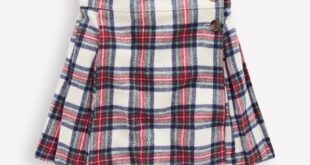INVESTING EXPLAINED: What you need to know about scrip dividends
In this series, we bust the jargon and explain a popular investing term or theme. Here it’s scrip dividends.
This sounds a bit Dickensian
We get that, but the word ‘scrip’ actually dates back far further – to medieval times when it was the name for a little bag used to carry money.
The meaning shifted in subsequent centuries. A scrip became, variously, a token given in lieu of wages (under exploitative employment practices), or a piece of paper denoting a right to acquire land or another asset. Under a scrip dividend scheme, you can elect to acquire extra shares at a set price in a company rather than taking the payout in cash.
Which UK firms offer scrip dividends?
Lots of big names including BP, British Land, HSBC, National Grid, Pennon, Royal Mail, SSE and Shell, under what is usually called a Drip – dividend reinvestment plan.
What’s the main advantage?
If you do not need the dividend income, taking the scrip option allows you to increase the size of your stake in the company, without facing stamp duty on the deal. The fee payable is much lower than the charge levied by a platform for buying shares. The downside is that you do not get the chance to choose the price at which you acquire the shares.
A piece of the action: Taking the scrip option allows you to increase the size of your stake in the company, without facing stamp duty on the deal
Is it a worthwhile thing to do?
A dividend reinvestment strategy can pay off – over the long term. The Barclays Equity-Gilt study shows that reinvesting dividends would have turned £100 into £2.9m, albeit over a really long term of 121 years. This represents a compound annual growth rate of 8.9 per cent a year – which drops to 4.2 per cent if dividends are not reinvested.
What’s the advantage for a firm?
It gets to reward shareholders while conserving its cash and so bolstering its balance sheet. In the spring of 2020, shopping centres owner Hammerson offered only scrip payouts. The company has now resumed cash dividends.
Why are we reading about scrip dividends at the moment?
Investment trusts are companies that own shares in other companies so they can pay scrip dividends. But there’s a fuss over trusts offering scrip dividends at share prices higher than those at which their shares are trading on the markets.
Tell me more
At present, the average gap or ‘discount’ between a trust’s net asset value (NAV) and the price at which its shares are trading is 14 per cent. But some trusts are discounts of 30 per cent-plus. Iain Scouller of brokers Stifel says it is ‘not in shareholders’ interests to be offered a scrip’ when a trust’s shares are trading ‘materially below NAV’. Annabel Brodie-Smith of the Association of Investment Trust Companies says the trade body is looking into the issues, reviewing its guidance on scrip dividends.
How are shareholders in these trusts responding?
Most people are realising that the scrip dividend is a poor deal and opting instead to receive cash.
Do I still have to declare scrip dividends on my tax return?
Scrip dividends are taxed in the same way as cash dividends and should be disclosed on a self assessment form.
Source link



